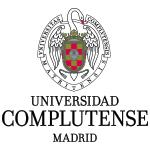Evaluation of a serological assay for the detection of bovine tuberculosis
Poster presentado en AHVLA International Conference 2011
15 de septiembre de 2011
Casal C., Bezos J., Romero B., Diez A., Alvarez J., Rodriguez-Campos S., de Juan L., Mateos A., Linscott R., Martel E., Lawrence J., Aranaz A. y Dominguez L.
Tests based on cell-mediated immunity are the main techniques used worldwide for eradication programs of bovine tuberculosis. The humoral response is supposed to appear at later stages of the disease so the development of serological assays would be an ancillary method to detect infected animals in this stage of infection. These animals may be missed with the skin test and their elimination would be crucial. Our objective was to evaluate the sensitivity of the IDEXX Herdchek* Mycobacterium bovis antibody Test Kit, an ELISA prototype designed for the detection of antibodies against M. bovis in animal´s serum or plasma, in comparison to SIT (single intradermal tuberculin) test using bovine PPD. Samples were collected at different times (before and after the skin test) from cattle (n=56) kept in a herd with natural tuberculosis infection (confirmed by the presence of lesions compatible with tuberculosis and/or microbiological culture). The number of reactors with ELISA (samples collected before and 72 hours after the skin test) was 12.5% and 7.14% respectively, and this number increased to 50% with samples collected 15 days after the skin test. The number of reactors achieved with the SIT test (severe interpretation was used following Council Directive 64/432/EEC) was 50%. Four out of the animals that were confirmed as infected by bacteriology were detected only by the serological assay. These preliminary results suggest that the best timing to detect the highest number of infected animals with IDEXX assay is 15 days after the skin test to take advantage of boosting effect
 | Servicio de Micobacterias (MYC). Centro de Vigilancia Sanitaria Veterinaria (VISAVET). Universidad Complutense (UCM). |
 | Departamento de Sanidad Animal. Facultad de Veterinaria. Universidad Complutense (UCM). |
Enlace a AHVLA International Conference 2011


